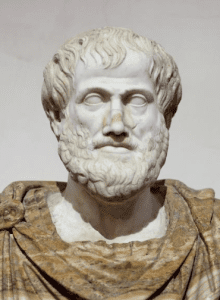Authentic Vs Autocratic Leadership Dialogue and analysis

 As executive protection specialists, we are constantly challenged with making decisions that can affect the safety and well-being of our clients. One of the biggest challenges we face is the question of leadership style: it often isn’t even one that we ask ourselves as we innately approach problems from a our nature/nurture space, but as professionals shouldn’t we spend some time on identifying what is the best fit for the scenario?
As executive protection specialists, we are constantly challenged with making decisions that can affect the safety and well-being of our clients. One of the biggest challenges we face is the question of leadership style: it often isn’t even one that we ask ourselves as we innately approach problems from a our nature/nurture space, but as professionals shouldn’t we spend some time on identifying what is the best fit for the scenario?
We spend a disproportionate amount of our time expending energy on the physical responsibility the role brings that makes up less than 5% of what we do (in a civil permissive environment).
So then, are you to follow an authentic leadership approach or an autocratic leadership approach when working with a team?
To answer this question, let us examine the Socratic dialogue between two individuals, before we do though, a few words to explain the two theories.
Authentic leadership theory emphasises the importance of leaders being self-aware, transparent, and honest with their team members. It’s about building trust and promoting open communication within the team.
Autocratic leadership theory is about a leader taking complete control over the team and making all decisions without any input from the team members. It’s a more directive approach to leadership.
How do these different leadership styles affect the team dynamic in an executive protection environment?
Authentic leadership theory can foster a sense of teamwork, with team members feeling more engaged and invested in the success of the mission. However, in certain situations, such as high-risk environments, autocratic leadership theory may be necessary to ensure quick and decisive action.
Operator A: I believe that an authentic leadership approach is the best way to lead a team in an executive protection environment. By being transparent, honest, and open with our team, we can foster a culture of trust and collaboration that will ultimately lead to better outcomes for our clients.
Operator B: While I appreciate the idea of authentic leadership, I believe that an autocratic leadership approach may be more appropriate in certain situations. When there is a high level of risk involved, such as in a hostile environment, the leader must make quick decisions and ensure that everyone on the team follows their directives without question.
Operator A: But what about the risk of the team feeling resentful or not valued if they are not given a say in the decision-making process? In an authentic leadership approach, the team feels valued and included, which can lead to greater job satisfaction and ultimately better performance.
Operator B: I understand your point, but in high-risk situations, there is no time for consensus-building or democratic decision-making. The leader must take charge and ensure that everyone on the team is following the plan without hesitation.
As we can see from this dialogue, both authentic and autocratic leadership styles have their merits and can be effective in certain situations. As executive protection specialists, we must be flexible in our approach and be able to adapt to the specific needs of our clients and the situation at hand.
Experientially I Operator B is entirely right when it suits the circumstances, such as a dynamic situation with exigent circumstances i.e. fight or brawl, car crash, some sort of armed conflict. Where that autocratic style fails is in the soft skills or empathic side of executive protection, especially where a team approach is essential for problem solving and catering to the needs of multiple parties. Often Operator B falls back on influence through authority whereas Operator A’s style has developed influence without authority and there exists a desire inside their team mates to commit to supporting the leaders goals in a collegiate and collaborative fashion because they understand their innate value beyond being trained automatons.
Bluntly – leadership done properly in times of peace and rest inspires action and execution at high speeds with high fidelity and reduces the level of micromanagement that is required to achieve outstanding results, good leadership creates the ability to have decentralised command in times of need. The failing then is not recognising the need to lead at all times and expecting you can jump up and down in a time of need and expect outstanding results.
As Aristotle once said, “It is the mark of an educated mind to be able to entertain a thought without accepting it.” As executive protection specialists, it’s important to be open-minded and willing to consider different approaches to leadership and security.
There is no one-size-fits-all or zero sum approach to leadership in executive protection or any environment for that matter, it is important to understand the benefits and drawbacks of both authentic and autocratic leadership styles. By being able to recognize when each approach is appropriate, we can ensure the safety and well-being of our clients and the success of our team.
In addition to being adaptable, it’s also important to have mental flexibility in an executive protection environment. The ability to think on your feet and adapt to changing circumstances can make all the difference in a high-pressure situation.
References:
Aristotle bust image
https://en.wikipedia.org/wiki/Aristotle#/media/File:Aristotle_Altemps_Inv8575.jpg
